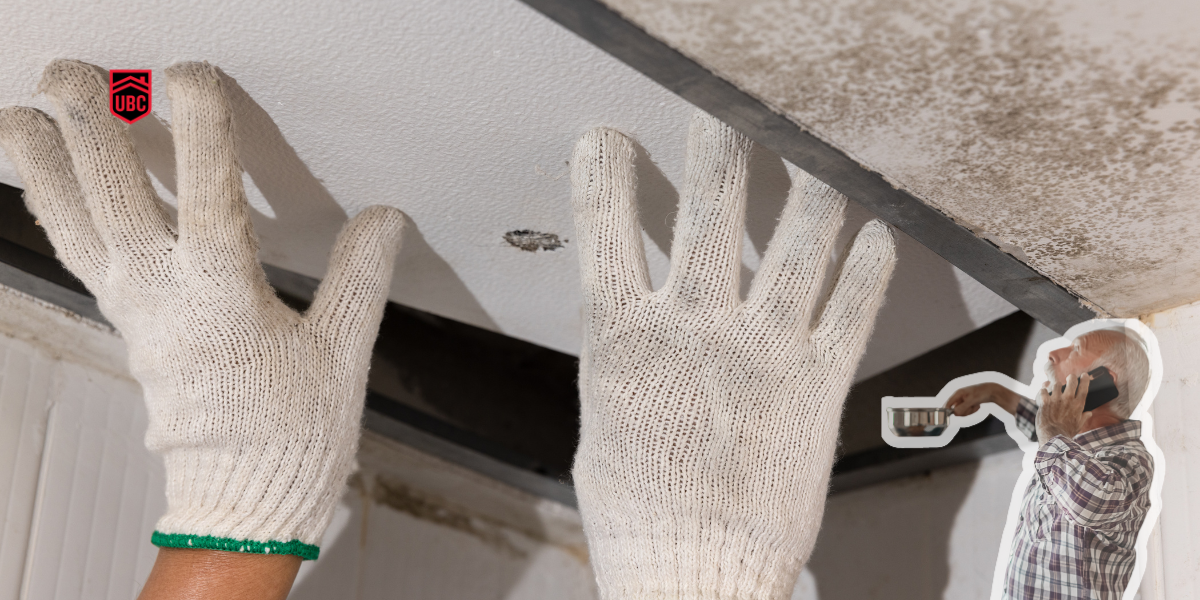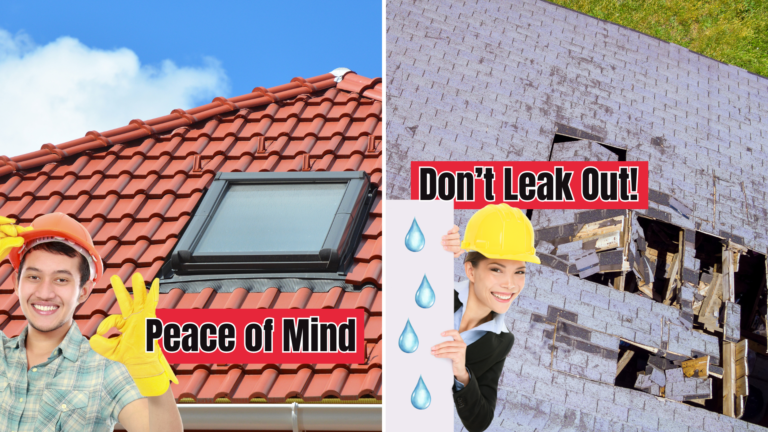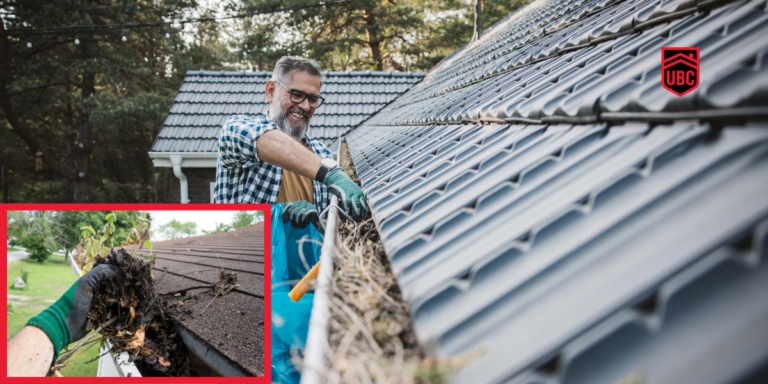What Keeps a Roof from Leaking?
Your home’s first line of defense against the elements is its roof. But what exactly keeps this crucial structure from succumbing to water infiltration? A well-designed and properly maintained roofing system plays a vital role in protecting your home from water damage. This system includes multiple components working together, such as shingles, underlayment, flashing, and proper ventilation, to effectively shed water and prevent moisture from entering your home’s interior.
The Importance of a Leak-Free Roof
When it comes to protecting your home, few things are as critical as maintaining a leak-free roof. Water infiltration can lead to a host of problems, from structural damage to mold growth, making roof integrity a top priority for homeowners. But what factors contribute to keeping your roof watertight?
Roofing Materials: Your First Line of Defense
The choice of roofing materials plays a pivotal role in preventing leaks. Let’s examine some common options:
Shingles: Whether asphalt, metal, or tile, shingles are the most visible part of your roof’s waterproofing system. They act as the primary barrier against rain, snow, and ice.
Underlayment: This water-resistant layer sits beneath the shingles, providing an additional defense against moisture penetration.
Decking: The structural foundation of your roof, decking supports the weight of roofing materials while contributing to overall water resistance.
When comparing roofing materials for water resistance, consider factors such as durability, lifespan, and suitability for your local climate. For instance, metal roofing often outperforms asphalt shingles in terms of longevity and leak prevention, but it comes with a higher upfront cost.
Critical Components in Roof Waterproofing
While shingles might steal the spotlight, several other components play crucial roles in keeping your roof leak-free:
Flashing: These thin strips of metal are installed around chimneys, vents, and other roof penetrations to redirect water away from vulnerable areas. Proper installation is key to their effectiveness.
Gutters and downspouts: By diverting water away from your home’s foundation, these systems prevent water from pooling and potentially seeping into your home.
Soffit and fascia: These components protect the edges of your roof, preventing water from entering the roof structure from the sides.
Chimney and vent seals: Ensuring these areas are properly sealed is crucial for preventing water intrusion at these common weak points.
The Significance of Proper Roof Design and Installation
Even the best materials can fail if not installed correctly. Here’s why proper design and installation matter:
Roof pitch: The slope of your roof significantly impacts its ability to shed water. Steeper pitches generally offer better drainage.
Professional installation: Skilled roofers understand the nuances of proper installation, ensuring each component works together seamlessly.
Building codes and standards: These regulations exist to ensure roofs meet minimum safety and performance requirements.
Common installation errors: Mistakes like improper nail placement or inadequate underlayment can lead to leaks, emphasizing the importance of expert installation.
Maintenance and Inspection: The Key to Long-term Leak Prevention
Regular maintenance is crucial for keeping your roof in top condition. Here’s what you need to know:
Conduct regular inspections: Look for signs of damage like cracked or missing shingles, damaged flashing, or clogged gutters.
Seasonal maintenance: Clean gutters in the fall and check for ice dams in winter.
Signs of potential leaks: Watch for water stains on ceilings, damp spots in the attic, or mold growth.
Professional assessments: Consider having a roofing expert perform a thorough inspection every few years, especially after severe weather events.
Advanced Leak Prevention Techniques
For those looking to go the extra mile in roof protection, consider these advanced strategies:
Roof coatings and sealants: These products can add an extra layer of waterproofing to your existing roof.
Ice dam prevention: Proper attic insulation and ventilation can help prevent these winter menaces.
Attic ventilation and insulation: A well-ventilated and insulated attic helps regulate temperature and moisture levels, reducing the risk of leaks.
Climate considerations: In Maple Grove, MN, where winters can be harsh, choosing materials and techniques suited to cold climates is essential.
Addressing Roof Leaks: From Detection to Repair
Despite our best efforts, leaks can still occur. Here’s how to handle them:
Detection methods: Use techniques like water testing or infrared cameras to pinpoint leak sources.
Temporary measures: Apply tarps or roofing cement to minimize damage until permanent repairs can be made.
Professional repair: For lasting solutions, trust experienced roofers to address the root cause of leaks.
Roof replacement: In some cases, especially with older roofs, replacement may be more cost-effective than repeated repairs.
Energy Efficiency and Sustainable Roofing Solutions
Modern roofing isn’t just about keeping water out – it’s also about energy efficiency and sustainability:
Cool roofing options: Reflective materials can help reduce cooling costs in summer.
Green roofs: These living roofs provide excellent insulation and water management while supporting local ecosystems.
Energy efficiency: Well-designed roofing systems can significantly impact your home’s overall energy performance.
Long-term savings: While initially more expensive, sustainable roofing solutions often pay for themselves through energy savings and increased lifespan.
Prevent Roof Leaks: Call United Building Contractors Today
Keeping a roof from leaking involves a complex interplay of quality materials, proper installation, regular maintenance, and proactive problem-solving. By understanding these factors and taking a proactive approach to roof care, homeowners can ensure their roofs provide reliable protection for years to come. A leak-free roof is not just about avoiding water damage – it’s about preserving your home’s structural integrity, maintaining indoor air quality, and protecting your investment. Whether you’re building a new home or maintaining an existing one, prioritizing roof health is a decision that pays off in the long run, safeguarding your property and peace of mind.
When it comes to ensuring your roof stays leak-free in Maple Grove, MN, trust the experts at United Building Contractors. With years of experience in roofing installation, repair, and maintenance, our team is committed to providing top-notch service tailored to our local climate. For expert roofing services in Maple Grove, MN, contact United Building Contractors for a consultation and ensure your roof stays leak-free for years to come.
FAQ
Q: What are the most critical components of a roof that prevent leaks?
A: The most critical components of a roof that prevent leaks include roofing materials such as shingles, underlayment, and decking, as well as flashing, gutters and downspouts, soffit and fascia, and chimney and vent seals. Each of these components plays a vital role in preventing water infiltration and ensuring a leak-free roof.
Q: How important is proper roof design and installation in preventing leaks?
A: Proper roof design and installation are crucial in preventing leaks. A well-designed roof takes into account factors such as roof pitch, material selection, and building codes and standards. Professional installation ensures that each component is installed correctly, and common installation errors are avoided. A poorly designed or installed roof can lead to leaks, even with high-quality materials.
Q: What maintenance and inspection practices can help prevent roof leaks?
A: Regular maintenance and inspection practices are important in preventing roof leaks. Homeowners should conduct regular inspections to look for signs of damage, clean gutters seasonally, and check for ice dams in winter. Additionally, professional assessments every few years can help identify potential issues before they become major problems. By staying proactive, homeowners can identify and address potential leaks before they cause significant damage.








